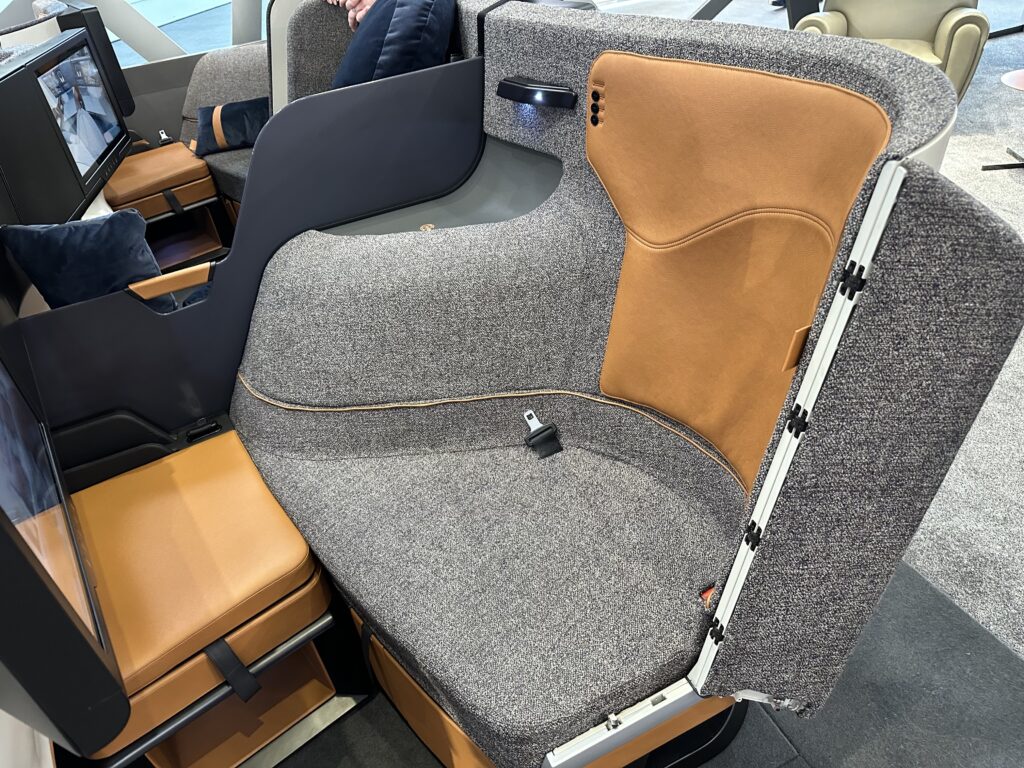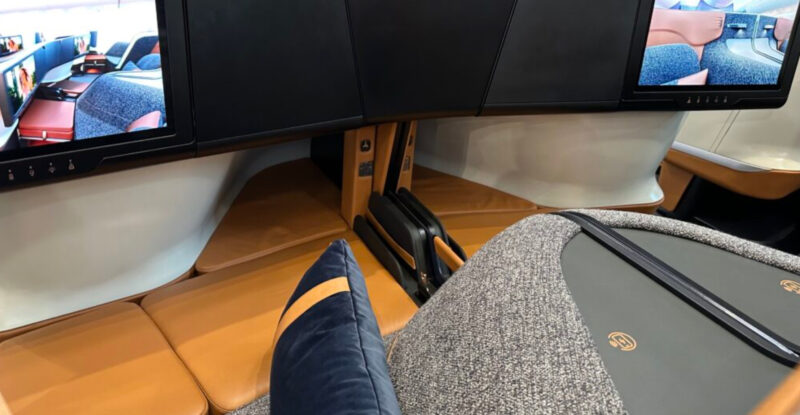 Should aviation stop seeking aesthetic perfection in aircraft interiors in the name of sustainability? A growing number of industry stakeholders are mulling this question, and indeed gauging airlines’ interest in accepting the small imperfections that can be found in recycled or recyclable bio-based products.
Should aviation stop seeking aesthetic perfection in aircraft interiors in the name of sustainability? A growing number of industry stakeholders are mulling this question, and indeed gauging airlines’ interest in accepting the small imperfections that can be found in recycled or recyclable bio-based products.
But would this ‘perfectly imperfect’ interiors concept fly in the United States? After all, the US lags many other countries in sustainability.
Dr. Mark Hiller, the CEO of Recaro Aircraft Seating believes it’s possible if marketed in the right way. During a sit-down interview late last year at the firm’s Americas facility in Fort Worth, Texas, he shared an apropos analogy with Runway Girl Network:
I think it’s the same when you look into other industries, maybe thirty years ago, nobody loved to have brown paper bags but that was marketed as recyclable paper, and then it was acceptable because you’re doing something better for the environment. So, if it’s set in the right context.
It also needs to come with a good explanation. And if you think about leather, for example, right now 50% of the leather is cut off because of stitches, marks, dots in the leather. Therefore, the leather, even if it’s natural leather, looks almost perfect. But it’s a natural product. So, without changing a lot, and just doing the marketing right, explaining the application why the leather might look a little bit different, and why there are spots which are not perfect, that could work. There’s still a lot of work to do.
It could be argued that Recaro already takes an inherently sustainable approach to aircraft seat manufacturing in that it builds seats for longevity. “Reliability is really good, and we have seats which are flying that are 25-30 years old,” revealed Dr. Hiller.
But given airlines’ onboard weight reduction initiatives, their need to offer various new comfort features for the modern passenger (such as device holders), and overall advances in technology, normally a seat will be replaced at a legacy or premium airline after six to eight years on average, “which means three times during the lifespan of the aircraft”, noted Dr. Hiller. And so, there are opportunities to go further and address sustainability end-to-end.
Recaro’s so-called “R Sphere” seat concept seeks to do just that. Built as a result of a life cycle assessment, R Sphere uses cactus for the seat cover, plus other recyclable and upcycled materials such as cork, wood, and even fishing nets for the literature pocket. During last year’s Aircraft Interiors Expo in Hamburg, company director of supply chain & sustainability Roland Grimm said he is “convinced” this is just the beginning of what can be achieved.

The seatmaker showcased R Sphere at last year’s AIX and at its Americas facility’s 25th anniversary. Image: Mary Kirby
But are bio-based products really ready for primetime to be incorporated into seats in revenue service, RGN asked Dr. Hiller?
“For sure”, and some materials are already selectable, he noted. “But where we need to be careful is that such materials could also come with a higher weight, which might not make sense then with a lifecycle assessment. So, we need to show that the overall sustainability evaluation is positive. It needs to be really a good design so that it comes with the same or even lower weight in using the recycled materials.”
The one which I’m very much in favor of — and it’s just a simple thing but is very visible — is using recycled fishing nets for the literature pocket. I think that’s a good thing. Because you’re taking the nets out of the ocean and putting them back into the product. And there are solutions out there which are certifiable.
Here again, however, airlines and their passengers would need to be willing to accept small inconsistencies or imperfections in certain materials.
“[I]f you take something like a cork compound, for example, the surface could look different. Sometimes it might help to show the passenger that ‘this is something that’s recycled’ but if you try to have maybe exactly the same surface like plastic material, this might not be possible,” explained the Recaro Aircraft Seating CEO.
Thermoplastics specialist SIMONA Boltaron understands this challenge. Its Terreform product line is made from recycled scrap from various Boltaron materials, both aerospace and non-aerospace grade (not from thermoplastics that have already been used in aircraft interiors).
But while pure aesthetic perfection is not achievable with Terreform, SIMONA America Group CEO Adam Mellen reckons that the average passenger likely won’t notice inclusions in Terreform-based aircraft interiors.
“Now if it’s a big scratch or stain or something, that’s different. But if it’s just a little spec, I’m not sure they really mind, perhaps especially if they knew that, to accept that little spec, meant that maybe we didn’t throw away several hundred pounds of plastics to get there,” Mellen told RGN at last year’s AIX.
He too agrees that a small insignia saying effectively, ‘this is recycled material’ could perhaps provide a feel good moment for passengers, and a willingness to overlook that little spec.

Italian seatmaker Optimares’ all-mechanical SoFab business class seat, which has incorporated Terreform into the table, headset faring, electrical box and wireless charger, is receiving positive attention for its innovation. Image: John Walton
Sustainability was certainly a major theme at last year’s AIX, and is poised to again be a focus at this year’s show, according to the organizers. Indeed, industry stakeholders are exploring everything from rigid foams to pecan shells for interiors, and using recycled and upcycled materials for amenity kits and seat covers.
As RGN journalists prepare to attend this year’s big event in Hamburg, we’ll certainly be on the lookout for new sustainable interior innovations coming to a cabin near you!
Related Articles:
- How Scottish Leather Group delivers sustainable leather for airlines
- Gen Phoenix looks beyond Eleather for aircraft seat cover recycling
- Designing for sustainability: Soisa studies pecan shells for interiors
- How SIMONA is embracing sustainability at every rung of its business
- PriestmanGoode, Lantal collaborate on striking new sustainable carpets
- Op-Ed: Cross-industry learning would boost sustainable cabin design
- Germany’s BDLI seeks to move the needle on cabin sustainability
- Divine divan? Optimares SoFab persuades with comfortable simplicity
Featured image of SoFab with Terreform credited to John Walton












